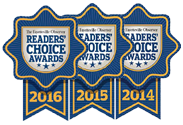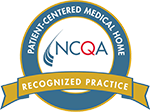What to do if Your Child Needs Fever-Reducing Medicine But None is in Stock
When your child is sick, you want to help them feel better. The last thing you want to worry about is running from store to store in search of fever-reducing medicines, such as acetaminophen, or its brand name, Tylenol, and coming up short. But that’s the reality for many, and during the flu season, no less, when it is needed most.
Why is there a shortage of pain and fever-reducing medicine?
After COVID-19, we are familiar with manufacturing shortages, but it appears that this is not the case. The cause is simply a greater demand. Like what happened when toilet paper ran out in 2020.
What parents can do if their child needs pain and fever-reducing medicine
Not all fevers need medication. A fever naturally occurs when the body is working to fight off illness or infection. The body is designed to self-regulate temperature. Chills are a natural reaction to a body that is too warm. It is the body trying to cool itself off. We treat fevers mainly to make us (and our kiddos) more comfortable. The aches and pains that are associated with many illnesses are downright uncomfortable. Fevers that are under 102 F typically do not require treatment.
Keeping kids comfortable when they are sick
Hydration is important regardless of whether or not your child is sick. However, when a child is sick, they are more likely to become dehydrated, which can snowball into other issues. Plus, fluids help flush the body of toxins, returning them to health. Pedialyte and even Pedialyte (or children’s electrolytes) popsicles are great for restoring lost electrolytes in the body while providing a sweet taste kids love. Dress kids in comfortable clothes, so they do not overheat or get too cold. Avoid ice baths in an attempt to reduce a fever.
Are generic pain and fever-reducing medicines okay in children?
Generic medicine has the same active ingredients as the brand name they are replicating. For example, Tylenol contains acetaminophen. You can purchase generic acetaminophen and get the same end result – reduced pain, inflammation, and fever. If all you can find is generic, don’t hesitate to purchase it. The same goes if all you can find is a brand-name product. While it costs more, it is always better to have it on hand in the event it is truly needed.
What about cough and cold medicine? Is that okay?
Many cough and cold medicines contain a fever-reducing agent too. However, it is typically not enough of a dosage to be effective. The AAP recommends against this medication and instead provides medicine based on the child’s symptoms. For example, if they have a fever and no other symptoms, taking cough medicine isn’t addressing the problem.
When should I call the pediatrician?
Depending on your child’s age, the time to call the pediatrician for an appointment can vary.
Babies under three months of age: Rectal temperature of 100.4 or higher, contact pediatrician or go to the emergency department immediately.
Children 3 months to 3 years of age: Contact your pediatrician if their fever is 102.2 F or higher.
Over age 3: Consider the behavior of the child and treat accordingly. A child who is alert, eating, drinking, wants to play, and has a normal skin color can probably go without. However, if the child has a fever over 102.2 F, is lethargic, and doesn’t want to drink, you should contact the pediatrician.
At Rainbow Pediatrics, our team is here to help you whenever you need us. Contact our nurse advice line if you are unsure what to do to help your child. If you need to schedule a same-day walk-in appointment in any of our clinics, you can do so on our website here.








